Teeth-marked Gum Hopper - Platybrachys barbata
Family Eurybrachyidae
This page contains pictures and information about Teeth-marked Gum Hoppers that we found in the Brisbane area, Queensland, Australia.
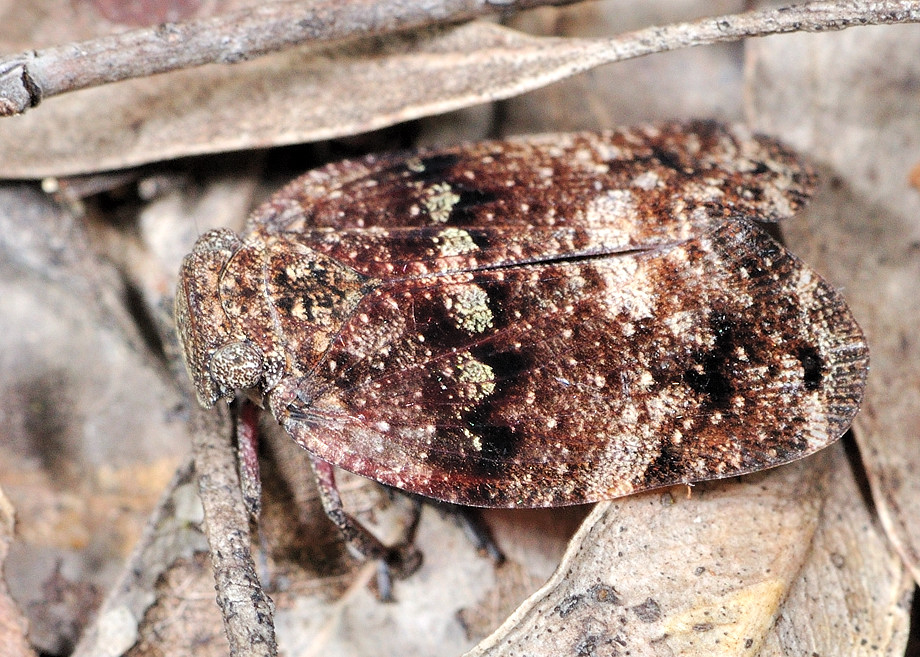
- Female, body length 20mm
- We sometimes found this planthopper on different type of gum trees, includes Peppermint Bark, Smooth Bark and Stringy Bark Gumtrees. This is a large size species. They are common in Brisbane.
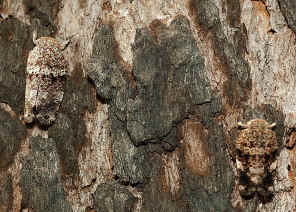
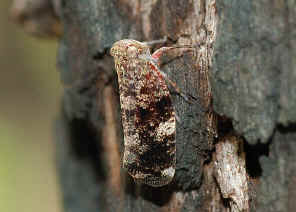
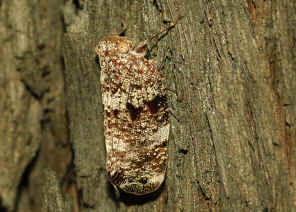
- Female and male Male Female
- Teeth-marked Gum Hopper is dark brown in colour with white pattern. Its abdomen and legs have some blue-green colour covered by its forewings. Near the forewings base the veins are reddish brown. Females have the Teeth-marked pattern across wings. There is a black spot on the forewings hind border near the tip. Legs are reddish brown.
Males
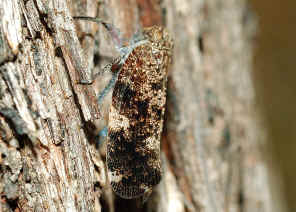

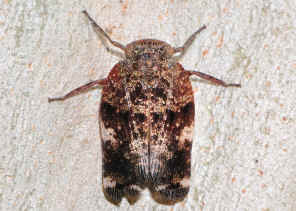
- From the reference we know that Platybrachys sp. are usually dimorphous, male and female are looked different.
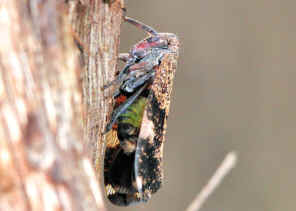
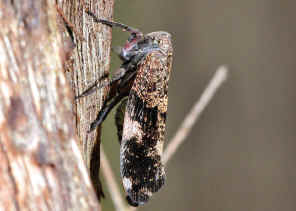
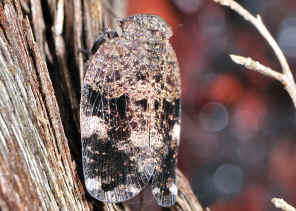
- Its abdomen and legs have some blue-green colour covered by its forewings.
-
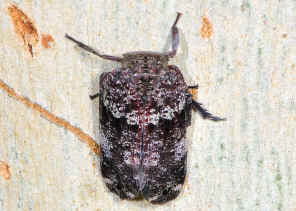
- The above planthopper has the body patterns mid-way between male and female.
Females
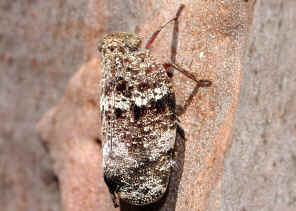
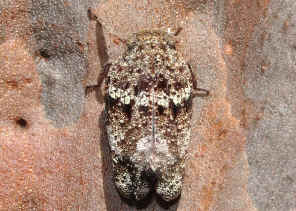
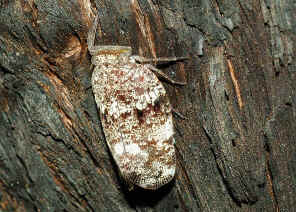
- Females looked a bit different from males. They are paler in colour with the "teeth pattern band" across middle of forewings. This pattern make the planthopper look like a width-opened vertebrate mouth when watching from behind. This may give the planthopper some sort of protection.
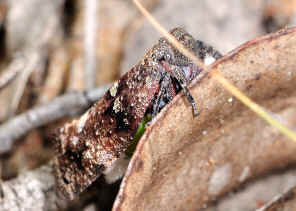
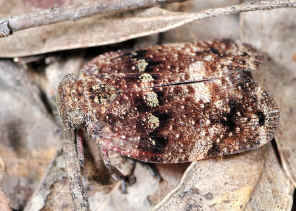
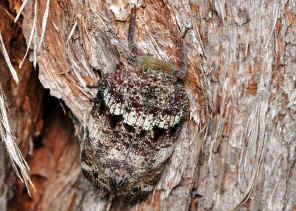
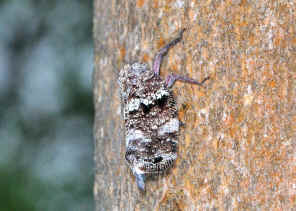

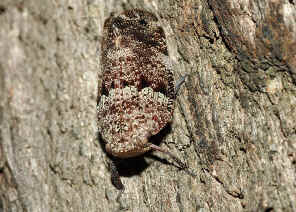
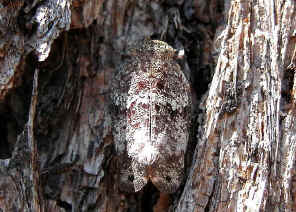
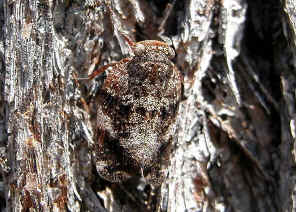
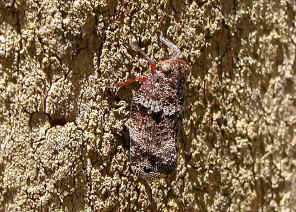
- This Planthopper was very hard to be noticed until it moved. It was hiding on a Stringy Bark Gum tree trunk. Photos was taken during mid summer in Karawatha Forest.

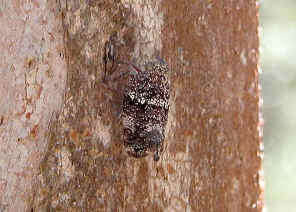
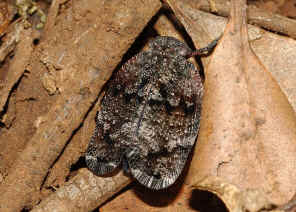
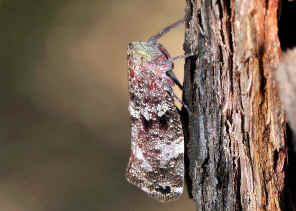
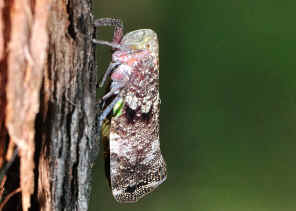
Laying eggs on gumtree trunk
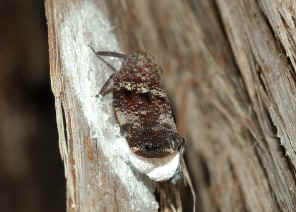
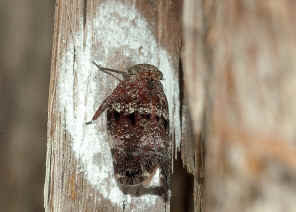
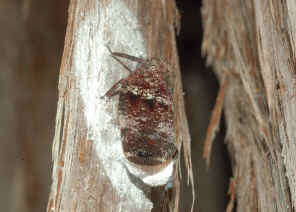
- Females lay eggs on tree trunks. The eggs are covered with a white waxy secretion produced by the ovipositing female.
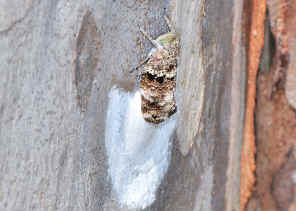

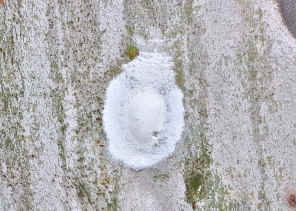
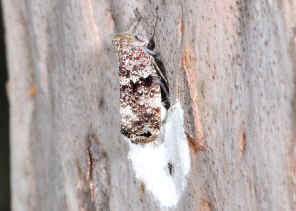
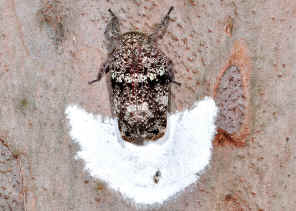
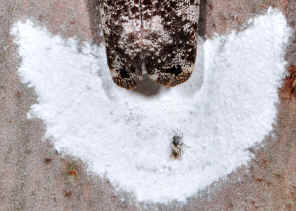
- The black dot on egg-patch was a small parasite wasp, about 2mm in body length. This indicated that the eggs are to be infected by the wasp parasite. More details please check this Planthoppers Biology page.
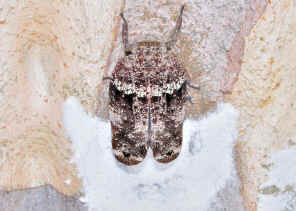
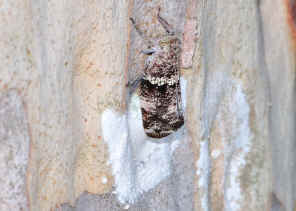
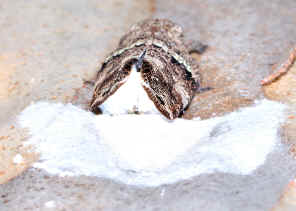
- Pictures were taken in Karawatha Forest from late spring to late summer. This species is somewhat variable in colour.
Nymphs
- Nymphs are brown to dark brown in colour. Nymphs habit are about the same as the adults. Like other members in the Hemiptera order, Planthoppers have their sucking mouth-parts to feed on host plants by sucking up the sap.
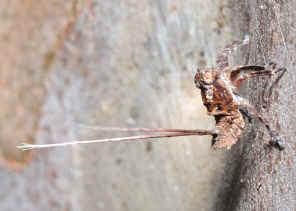
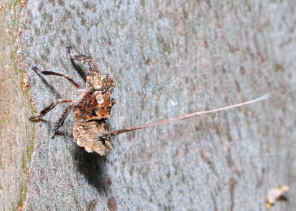
- The nymphs were most often found on smooth bark gumtree trunk.
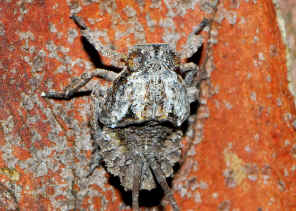
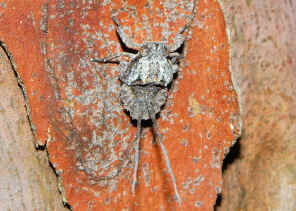
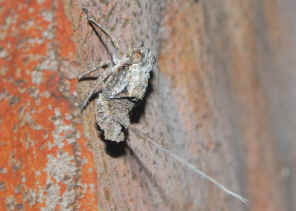
- They were also found on Ironbark gumtree trunk as well.
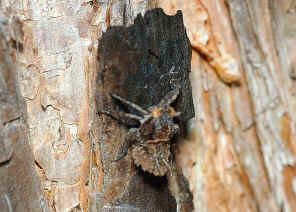
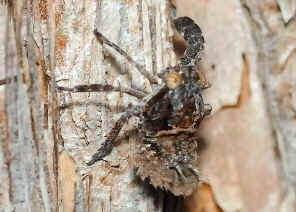
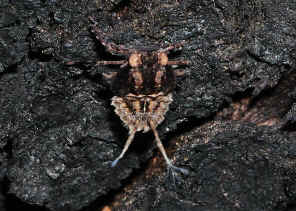
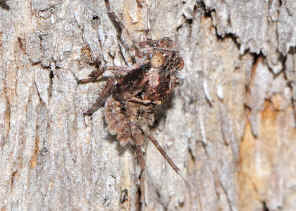
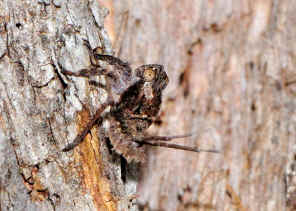
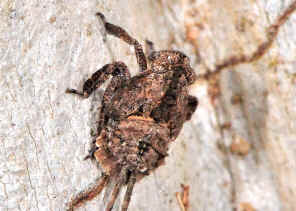
- We found this nymph on Paper-bark tree trunk a few times, but we never saw the adults there.
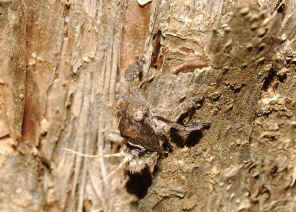
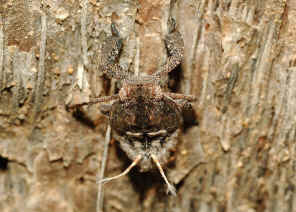
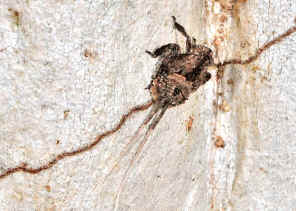
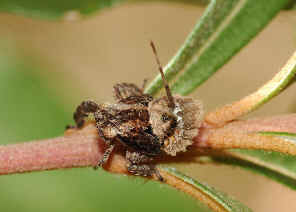
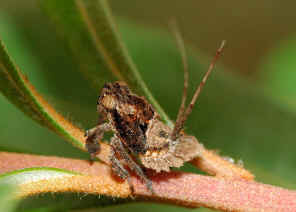
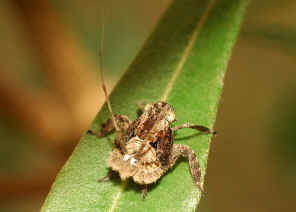
- We found this planthopper nymph on Banksia stem once.
Planthopper Adult Emerging
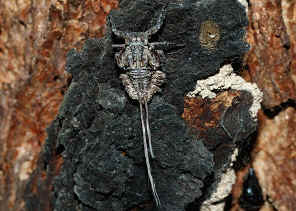
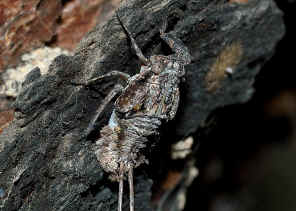
- On Aug 2007 in Karawatha Forest, we found this planthopper nymph. Its body size was large and fat. We thought it might be about time to turn into a adult. So we collected it and kept it in a jar.
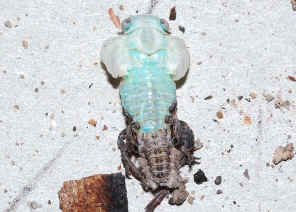
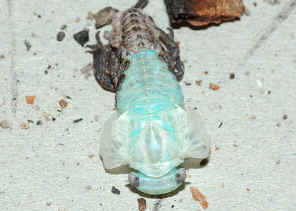
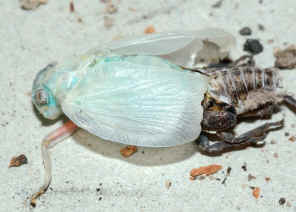
- 10:00pm 10:30pm 11:00pm
- In the same day at around 10:00pm, we found the planthopper was emerging. The whole emerging insect was pale blue in colour, with pink legs. Then it extended its wings to normal size and turned into dark brown colour.
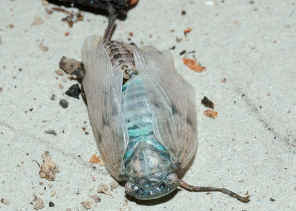
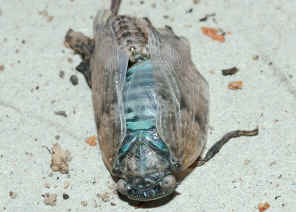

- 12:00pm 12:30pm 8:00am
- We might not have provided the best environment for the insect to emerge. Its wings were a bit deformed.
- Reference:
- 1. Species Platybrachys barbata (Fabricius, 1775) - Australian Faunal Directory, Australian Biological Resources Study, 2008.
